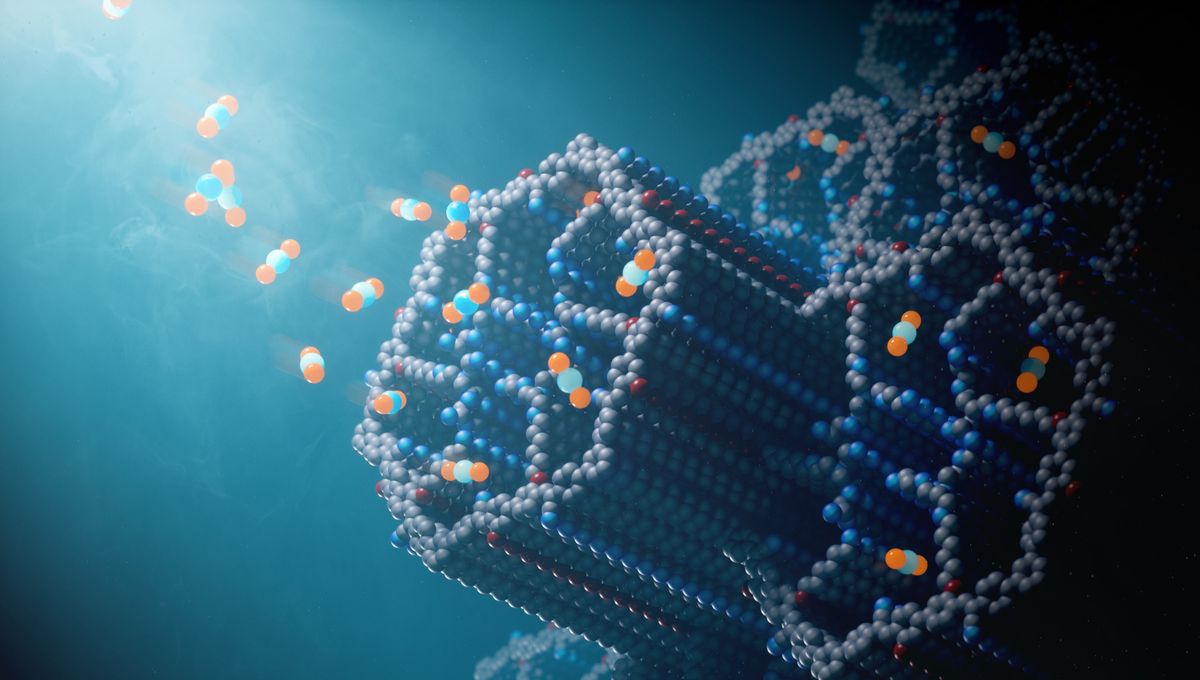
Releasing carbon dioxide and greenhouse gases is easy, but it takes work to capture them again. Removing carbon from the air is a way to reduce the effects of the climate crisis, but a lot of the technology is still at the design stage or is not efficient enough to balance out the emissions. A new approach has been announced that has the potential to make direct carbon capture from air so much simpler.
This is an exciting development. Current carbon capture works best at high concentrations of carbon dioxide. That could be at the end of flues, for example. Researchers have now developed a porous material that adsorbs carbon dioxide as it passes through it. Adsorb is not a misspelling. An absorbing material, such as a sponge, gets soaked through while an adsorbing one keeps molecules on its surface.
“We took a powder of this material, put it in a tube, and we passed Berkeley air – just outdoor air – into the material to see how it would perform, and it was beautiful. It cleaned the air entirely of CO2. Everything,” senior author Omar Yaghi, the James and Neeltje Tretter Professor of Chemistry at UC Berkeley, said in a statement.
“I am excited about it because there’s nothing like it out there in terms of performance. It breaks new ground in our efforts to address the climate problem.”
The team estimates that just 200 grams (7 ounces) of material could remove 20 kilograms (44 pounds) of carbon dioxide in a year. And it could be used inside carbon capture systems that are deployed already to remove carbon dioxide from flues and from the atmosphere.
“Flue gas capture is a way to slow down climate change because you are trying not to release CO2 to the air. Direct air capture is a method to take us back to like it was 100 or more years ago,” UC Berkeley graduate student Zihui Zhou, the paper’s first author, said. “Currently, the CO2 concentration in the atmosphere is more than 420 ppm, but that will increase to maybe 500 or 550 before we fully develop and employ flue gas capture. So if we want to decrease the concentration and go back to maybe 400 or 300 ppm, we have to use direct air capture.”
The material is known as covalent organic framework-999, a rigid crystalline structure with regularly spaced internal pores. COF-999 is decorated internally with amines, which interact with carbon dioxide as it passes through. It can be used in cycles to adsorb and then release CO2 that then gets buried.
“This COF has a strong chemically and thermally stable backbone, it requires less energy, and we have shown it can withstand 100 cycles with no loss of capacity. No other material has been shown to perform like that,” Yaghi said. “It’s basically the best material out there for direct air capture.”
The team hopes to use machine learning techniques to improve this setup even more. Until this technology is available, the crucial way to slow down the climate crisis is to reduce our emissions and make sure that governments respect and enforce the Paris Agreement.
A paper discussing the development is published in the journal Nature.
Source Link: New Carbon Capture Design Is Major Step Forward In Removing CO2 From The Air